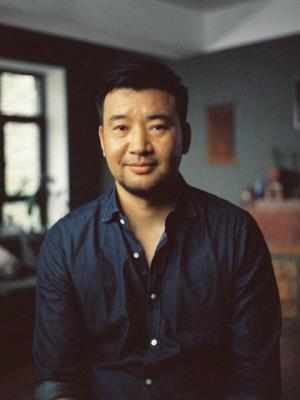
BAATARZORIG Batjargal I Батжаргалын Баатарзориг
born in 1983 in Ulaanbaatar.
The preservation of Mongolia’s cultural heritage that is being lost through historical transformations is central to Baatarzorig Batjargal’s multi-disciplinary work. Mongolia has long experienced sustainable living and self-sufficiency being removed from the lures of capitalism by geographical remoteness and nomadic farming culture. Batjargal brings attention to his heritage through his work that merges traditional painting techniques, such as Mongol Zurag, with contemporary styles. This is where mythological and spiritual world of Mongolia is confronted with modern symbols of development. In this way, he preserves cultural heritage and poses critical questions about current developments in Mongolian society.
Batjargal studied Fine Arts at the Mongolian University of Arts and Culture in Ulaanbaatar where he resides. His had solo exhibitions in London at Jack Bell Gallery, and his group exhibitions include Contemporary Art of Mongolia (Hong Kong, 2019) and Asia Pacific Triennale at Queensland (Australia, 2018). His works have been exhibited in numerous galleries and museums worldwide, including the UMA Art Gallery, the 976 Art Gallery and the Zanabazar Museum of Fine Art in Ulaanbaatar, as well as internationally in Korea, Japan, China and France.
Mongol zurag is a style of painting in Mongolian art. Developed in the early 20th century, zurag is characterised by the depiction of secular, nationalist themes in a traditional mineral-paint–on–cotton medium similar to Tibetan thangka. It is thus distinguished from both traditional Buddhist fine art and the socialist realism favoured during the Mongolian People's Republic.
The style was pioneered in the aftermath of the 1921 Revolution by artists such as Balduugiin Sharav, whose One Day in Mongolia remains one of the most celebrated works of Mongolian art. Zurag paintings featuring scenes from everyday life, in both contemporary collective farm and traditional pastoral nomadic settings, became popular in the 1950s and 1960s. Historical depictions of the 1921 Revolution as well as earlier national figures were also popular, but overtly religious themes were discouraged by the state. Since the establishment of democracy in 1992 there has been a resurgence of interest in the style. Recent zurag paintings have featured nationalistic scenes drawn from the Secret History of the Mongols and the life of Genghis Khan, as well overtly religious imagery inspired by pre-Buddhist shamanism. They have also become more symbolic and less strictly representational.
Throughout its history zurag has encompassed a diverse range of visual styles. Flat, brightly coloured shading in the Buddhist tradition is used alongside European-style realism and geometric perspective. Some zurag artists co-opted older Buddhist iconographic conventions for purely secular topics.
